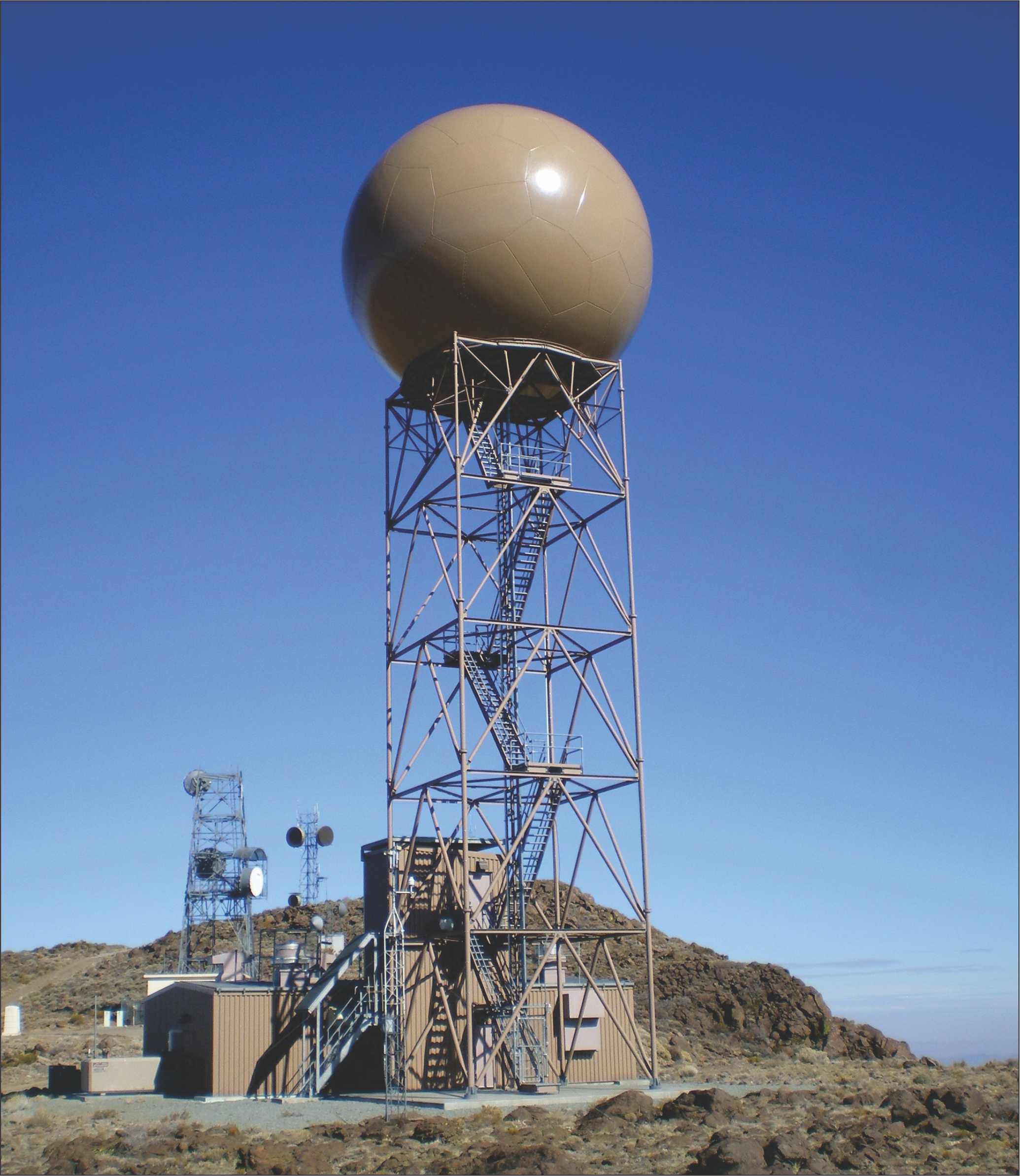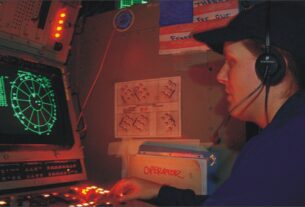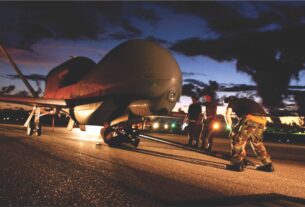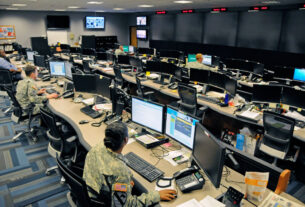The Network Centric Warfare is assuming a new dimension to manage the 21st century battle space if a modern war has to be won under a strenuous condition, as fast imposing the will on the enemy is proving to be the key element in clinching the victory.
It is neither platform centric warfare nor human mobilization centric warfare, the modern warfare is quick and intense, supposedly not to last too long as it can create space for public or political opinion to interfere in the process of the war.
Thus, considering military forces as systems, or as ‘systems of systems’, can offer a fresh dimension to develop a new understanding of modern warfare in which NCW operations are going to be most crucial and deciding factors.
The methods by which military force elements interact in the modern battle space are being transformed by contemporary information technology.
Information technology is the centre-piece of the modern era, the determining feature of the Tofflers’ so-called ‘third wave’ of human civilisation. Information technology is itself now undergoing a fundamental shift from platform-centric computing to network-centric computing.
Significant research and development investment in the civil information technology sector has led to key technologies that have created the conditions for the emergence of network-centric computing.
Network-centric computing operations are characterised by information-intensive interactions between large numbers of heterogeneous computational nodes on the network.
Whether these interactions are focused on commerce, education, or military operations, there is ‘value’ that is derived from the content, quality and timeliness of information moving between nodes on the network.
This value increases as information moves toward 100 per cent relevant content, 100 per cent accuracy, and zero time delay-towards that elusive goal of knowledge dominance.
The US Armed Forces have seized upon these developments in civilian information technology. In the US Joint Vision 2010, the emerging operational concepts are characterised as ‘Network-Centric,’ and the conception of future warfare described as ‘Network-Centric Warfare’.
While an understanding of development is adequate reason to seek an understanding of the notion, network-centric warfare is as much a concept as an item of hardware.
This system-based concept is useful for any size of force when preparing for, and waging, armed conflict. Indeed, in leveraging off commercial information technology developments, network-centric concepts may be particularly useful for those forces without a large budget.
Network-centric warfare is a derivative of civilian network-centric computing, whose principles have been derived by observing successful businesses and their commercial experiences.
Network-centric computing is being exploited by companies to provide a competitive edge in the commercial business sector; and in a similar manner, network-centric warfare seeks to attain an edge in warfare.
Information grid
The entry fee for network-centric warfare is a high performance information grid; it is the keystone of secure network-centric computing. The information grid is the fundamental building block which provides the infrastructure for receiving, processing, transporting, storing, and protecting information.
The information grid is a ‘network of networks’ consisting of communications paths (‘links’ or ‘pipes’), computational nodes, operating systems, and information management applications which enable network-centric computing and communications across the battle space.
The information grid can consist of both military and commercial communication capabilities and transmit multiple information types in multiple modes at multiple data rates. Voice, data, and video can be transmitted via point-to-point or direct broadcast.
A key requirement for an information grid is information protection; the grid must have embedded capabilities for Information Assurance to prevent intrusive attack and assure commanders that the information being presented is genuine.
The combination of these capabilities enables the information grid to provide the war fighter with assured high speed access to the true information required to dominate across the tactical, operational and strategic levels of conflict.
Sensor grids are composed of air, sea, ground, space and cyberspace based sensors. The elements compromising the sensor grids can include dedicated sensors, sensors based on weapons platforms, and sensors employed by individual soldiers, as well as embedded logistic support sensors.
The information from the sensor grid is distributed across a force through the connectivity and computing capabilities of the information grid.
Ideally, the networked sensors create engagement quality awareness. This means that the time delays in passing track information to the platform firing the weapon (the ‘shooter’) must be short enough to allow accurate weapons engagement.
Against relocatable land targets, delays of an hour or more may be acceptable if the target will not move in that period.
Against naval vessels, lags of some minutes may be permissible as in this time a ship may not have moved outside the search radius of the seeker of a guided weapon (eg. an anti-ship missile) fired by the shooter using the target positional data passed from the sensor grid through the information grid to the shooter.
However, for successfully engaging fast jet combat aircraft, time lags through the grids will probably need to be less than a quarter of a second, as aircraft very rapidly leave the small area an air-to-air missile searches after firing.
Sensor support
Abstractly, sensor grids can be viewed as a sets of ‘sensor peripherals’ (the actual sensor devices) with ‘sensor applications’ installed on the information grid to enable universal sensor recruitment, multi-mode sensor tasking and data fusion. Sensor grids can be persistent or transient.
For example, a transient ‘mission specific’ sensor grid optimised to support the Suppression of Enemy Air Defences (SEAD) task while a strike package is within hostile airspace will have different elements than a sensor grid optimised to perform a long duration, air defence task.
Ideally, the operational architecture of a sensor grid could enable subsets of grid sensors to be dynamically tasked to support specific ‘shooter’ missions.
The communications grid could dynamically match the optimum sensors to the most suitably positioned and equipped shooter.
The size, composition and complexity of the sensor grid required to support a specific mission is a function of the level of battlespace awareness required to prosecute the mission.
The number and types of sensors required to support a specific mission in a sector of the battlespace will increase or decrease as a function of the size and terrain of the battlespace, as well as the disposition of friendly and enemy forces in the battlespace.
A few wide area sensors may suffice for sea surveillance over a large area, but in an urban environment a large number of local area sensors will be needed.
Air, sea, ground, space, and cyberspace based ‘shooters’ form the engagement grid. When cued by the sensor grid information distributed by the communications grid, the engagement grid can apply effects at precise places and times.
As with the sensor grids, the engagement grids can be envisioned as a set of ‘shooter peripherals’ with ‘shooter applications’ installed on the information grid.
These ‘shooter applications’ consist of software for command and control, and for weapon employment.
As with sensor grids, engagement grids could be persistent or transient. For SEAD support of a strike package operating inside hostile airspace for an hour, only a transient grid able to engage targets when they threatened friendly assets may be necessary.
However, for long term air defence of a critical high value asset a persistent grid may be essential to allow engagement continuously day or night for a protracted period.
The combination of the grids allows the massing of effects from sea, land, air and cyberspace shooters to give better depth of fire, faster reaction times, increased lethality and a higher probability of kill.
The networked sensors can allow the shooters to have a common operational picture allowing the networked shooters to undertake cooperative engagements.
The correct target can be engaged, at the right place, with the minimum effort and minimum risk to friendly forces.
Applying the US network-centric warfare concepts, a modern military joint force can be considered as a system composed of a communications grid, a sensor grid and an engagement grid.
Communication
However, the term communications grid is potentially misleading, as it includes by implication the command functions. From a conceptual viewpoint it may be preferable to include a fourth ‘command’ grid.
The command grid would principally be the province of human decision makers but could include knowledge based, artificial intelligence, software applications that acted as command advisers able to recommend courses of actions.
Including a command grid would allow the useful Boyd’s loop of Observe, Orient, Decide, Act (OODA) to be incorporated as functions alongside the virtual, electronic, grids.
The sensor grid would observe, the communications grid (which includes data fusion and dissemination) would orient, the command grid would decide and the engagement grid would act. To achieve a mission, the grids must interact and exchange information.
The grids are inherently virtual and can be standing, or created on order, to meet the command and combat situation as required. Even from an established grid system, different quality services can be provided to meet the needs of different users.
A high level commander will only need broad positional information on friendly and hostile force location but over the whole theatre.
Conversely, an air defence commander using Cooperative Engagement Capability will need near-real time, highly precise hostile aircraft track data, but only covering the small area in which the engagement is taking place.
Conceptually, the command, information, sensor, and engagement virtual grids overlay the operational theatre.
The various force elements, which could range from individuals and single platforms to battle groups, would each be nodes on one of the grids able to receive, act on, or pass forward data as appropriate.
The own force nodes within any grid overlaying the non-linear battlespace would be most dense in the friendly regions, and be clustered around important assets or areas. The grid networks would extend from the rearward, friendly domains into the depths of hostile territory.
Deep in the hostile domain, the nodes would be more sparse and dispersed, with connectivity back to other nodes in friendly territory a major issue.
The hostile force would probably mirror image this visualisation of friendly force deployment, with hostile force elements located throughout the battlespace but clustered around areas perceived as critical centres of gravity in own force territory.
In the network-centric warfare system, modern information technology can enhance force element interaction to levels not previously experienced. Air, sea, land, space and cyber force elements can be linked and operate as a single networked system with a single operational aim.
Integrated force
This integrated, tightly-coupled, force concept is perhaps a step beyond the current concepts of joint forces, which focus more on command issues in determining whether or not a force is joint.
The physical and psychological means are the traditional methods of the warrior, but the electronic means of jamming and deception can now be combined with information warfare, cybernetic warfare and transnational infrastructure warfare.
The visualisation of a military force as a system comprised of command, communications, sensor and engagement grids allows an appreciation of the utility, impact, and integration of the disparate and dissimilar means of attack modern technology has made possible.
Attacks can be considered as being focused against a specific grid’s vulnerable elements, or to prevent the interaction between the elements.
Each grid system is a small, single system within a larger system of systems, and hence grid interaction may be a most profitable focus of attack.
Taking the broad view, the aim of these physical, electronic and physiological attacks is to cause a systemic failure within the opposing military system.
Indeed, there has been a gradual application of Suppression of Enemy Air Defences (SEAD) techniques over the least 50 years in an attempt to reduce losses of attacking aircraft to hostile air defence systems.
SEAD concepts take a systemic approach to defeating an opposing system and use a variety of tools and methods to engage a system’s command, communication, sensor and engagement grids to defeat an opponent’s OODA loop.
A comparison of loss rates between those air forces using SEAD doctrines and methodologies and those who have not is illuminating.
The Argentine Air Force and Naval Air Arm suffered unsustainable losses of more than ten per cent a mission while attacking ships defended by the Royal Navy’s integrated air defence system.
This attrition determined the war’s outcome. By comparison the loss rates of the Israelis in the Bekka Valley campaign and the US forces during Desert Storm were some four orders of magnitude less.
The difference in attrition rates indicates that attention to SEAD can reduce losses to insignificance.
While air defence equipments have steadily improved since World War II, the loss rates to defensive systems sustained by air forces embracing SEAD has steadily declined.
SEAD may be a harbinger of 21st century network warfare concepts which seek to engage and defeat an opponent’s military system, not individual platforms.
Visualising war as a clash of opposing systems each comprised of four grids overcomes the boundaries imposed on concepts, operational employment and force structures by Service-or environment-centric views.
Armies emerged in prehistoric times, navies during feudal times and air forces during the industrial era; in the post-modern era, though, the three are being progressively integrated under the Joint Service paradigm.
The environmental framework is similarly becoming less useful as all three services seek to achieve their missions by increased use of air vehicles. Air forces can no longer be defined solely or simplistically by their use of the air.
The integrated battlespace can provide more flexibility for all of the forces in the theatre of operations and will enhance the contribution of air power.
However, the independent status airmen have historically accorded air power should disappear as integrated operations are made possible.
The tighter knitting of the operational environment will demand a revisiting of air power doctrine to accommodate the possibilities available in the integrated battlespace.
Air power will continue to grow as an instrument of national power, but at the same time the independence which characterised air power and airmen will fade in the common vision of battlespace management.
The inherently different capabilities of air elements compared to surface elements allow each to bring different capabilities essential to the overall military system.
In the engagement grid, the air shooter elements could make use of their speed and range of action to provide limited duration, wide area coverage, or rapid reinforcement of focal areas.
Conversely, surface force shooter elements able to undertake long duration, point operations would focus on providing focal area coverage.
In a similar manner, for the sensor grids, air elements could use the positional advantages from high altitude assets to provide short duration, wide area surveillance, reconnaissance and target acquisition coverage; while surface elements would provide long term, focal area coverage.
Each Service element can bring useful and unique capabilities to each of the four grids, but each capability must be able to ‘plug and play’ in the larger joint force arena. Plug and play applies as much to human beings as to machines.
The system approach can embrace and integrate not only the contribution of the three Services but also that of extra-Service organizations.
Civil elements
The armed forces are making increasing use of the civilian infrastructure for support tasks as diverse as providing intelligence to repairing damaged equipment.
The systems approach allows the wide diversity of civil activities that directly and indirectly form part of the defence capability to be conceptually incorporated from an own force, and a hostile force, viewpoint.
In a similar manner to the combination of the three services into a joint force, the contributions of the civilian agencies and contractors can be conceptually integrated into the appropriate grid.
In so doing the importance, vulnerability and fragility of civil elements is perhaps highlighted. The contemporary emphasis on the blurring of the military-civil divide has made the civilian component relatively more important, but also more subject to attack (by any means) as part of any effort to degrade an armed force’s effectiveness.
The concept of an integrated force combining and coupling a large array of disparate military elements and civil organisations is an evolution beyond joint force concepts which primarily focus on the contributions and involvement of only the three Services.
The open systems concept of network-centric warfare usefully unites all battlespace participants into an integrated force able to focus on a single operational aim.
With a network centric approach, development plans for future forces need to embrace a system of systems approach where the focus is not on platforms, but on nodes.
Instead of considering platforms as autonomous stand-alone entities, equipment and platforms should now be treated as nodes of a network.
The ability to connect to the information grid now emerges as a primary source of combat power with ‘plug and play’ interfaces between platforms and the information grid critically important. Connectivity becomes a determinate of combat effectiveness.
This approach alters the present methodology when considering force structure development. The existing force structure thinking is platform-centric with the existing processes tailored to trading off platform A against platform B.
In a network centric approach, the comparison would be between rival network concepts. System A will be played off against system B in the process of determining force structure balance of investment plans. System architectures will be the new currency in force planning.
However, in comparing the rival system options, all three parameters of a system will need to be considered; that is the number of elements, the quality of each element and the interactions between them.
Traditionally, quality has been considered the critical factor in air combat success. With network warfare’s systems approach, though, numbers are also important.
The dangers of micro-management are evident in the network-centric warfare concept but may be minimised by commanders looking only two command levels down, and learning to practice information sufficiency rather than seeking information overload.
Higher level commanders should always be focusing on a force’s future moves and not be sidetracked by the demands of the moment to interfere with lower level subordinates’ handling of current activities.
However, a possible gain from network-centric warfare is that with a shared picture the command chain could avoid the need to be constantly asking questions to ascertain the activities being undertaken and results obtained. The common picture may give commanders more faith in subordinates, not less.
When combined with insights from viewing armed forces as complex systems, network-centric warfare concepts can aid in thinking about preparing and waging armed conflict.





